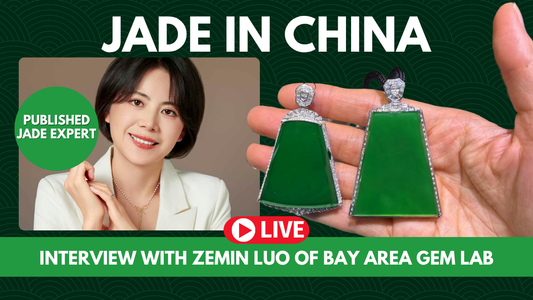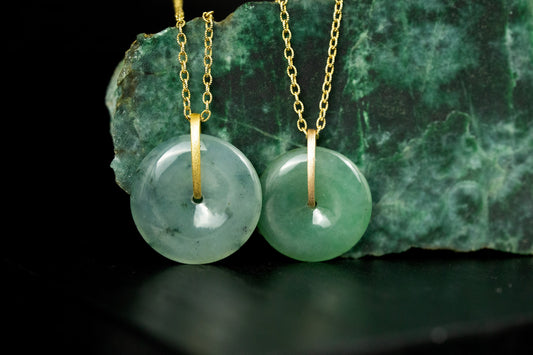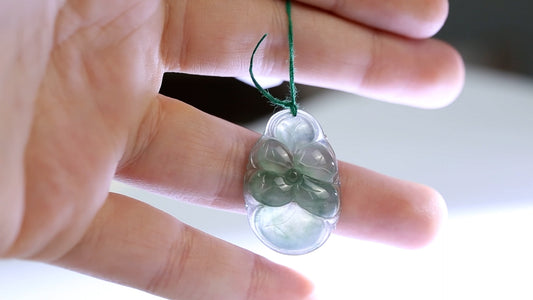This is a transcript of the JOTT video "Turquoise Explained"
TIMESTAMPS
00:23 How to Tell if Turquoise is Real
00:48 Chrysocolla and Turquoise Rough
3:28 Turquoise History
3:44 Stabilized Turquoise
4:30 Kingman Turquoise
5:18 Turquoise Price
5:33 Egyptian Turquoise
6:00 Blue Moon Turquoise
6:19 Royston Turquoise
6:50 Natural Vs Stabilized Turquoise
7:42 Turquoise Doublet
7:46 Turquoise Vs Variscite
8:02 Sleeping Beauty Turquoise
8:13 Persian Turquoise
8:39 Sonora Turquoise
Welcome to Jewels of the Trade. My name is Jordan and this video is a crash course in turquoise. Whether you’re shopping for turquoise, wondering what you already have, or wanting to learn more so you can sell turquoise – this video will take you from novice to expert on the topic.
See the timestamps in the video description if you want to hone in on one of the topics featured:
Real vs Fake Turquoise
Natural vs Stabilized Turquoise
Or Turquoise by Origin
Let’s talk about identifying fake turquoise.
The most common simulant of turquoise is dyed blue howlite.
There is a reliable method of identifying dyed howlite that involves rubbing a Q-Tip with acetone on the surface. If the Q-Tip picks up some of the blue dye, then it’s not natural turquoise. I actually didn’t have a sample on-hand where this testing method worked, so we’re going to talk about alternate ways to identify fake turquoise.
Can you tell which one of these is turquoise? The stone on the right is turquoise, and the stone on the left is chrysocolla – which can be easily confused with turquoise. Notice the difference in color and luster. As you see more turquoise versus simulants of turquoise, you’ll build up a frame of reference and be able to distinguish them visually with ease.
Let’s take a look at this bracelet. Do you think this is real or fake turquoise?
Look at the metal. This is not a fine metal, but turquoise can be a very inexpensive stone, so it is often set in sterling silver – not always gold or platinum. This however, is none of those as evidenced by its appearance and its lack of a stamp. This is what jewelers call “base metal.”
A close inspection confirms that this is not genuine turquoise. Look here. The identical discoloration in each stone is a dead giveaway that this is not a product of nature, but an imitation. This is fake turquoise.
What about this necklace? Do you think this is turquoise?
You can’t tell this in the video, but it feels suspiciously lightweight. If you took this to your local, independent jeweler, they would know it’s fake immediately. But if you haven’t held a lot of turquoise, that’s not very useful information to you – so here’s something you can look for at home.
You can see where the matrix that had been painted on has actually worn away. This is conclusively not real turquoise.
Do you see any other clues that these items aren’t real turquoise?
Let me know in the comments!
So I think you’re already getting the hang of this, but in case you need a little more practice, do you think this is turquoise? Look at these white markings. These show where this piece has been scratched, removing the paint from the surface. Many fake turquoise pieces are simply plastic. This is just white plastic with a turquoise-colored coating.
What about this one? Is this real turquoise? Look at the matrix. Let’s compare this matrix to the matrix in turquoise that has been verified as genuine. This is a stabilized Kingman turquoise cab that we’ll look at closer later in this video. Look at how natural the matrix is. Side-by-side, it’s very obvious that the matrix in the horseshoe necklace has been painted on. We have a saying in gemology: “If it doesn’t look natural, it probably isn’t.”
Let’s also compare this to a piece of genuine turquoise from Egypt. See how the matrix in the Egyptian stone has depth to it? Whereas the horseshoe necklace has thin, consistent lines that are clearly painted on top.
This necklace is also given away by its shoddy faux-matrix. Real matrix simply does not look like this. Here, the left is genuine turquoise, and the right is fake.
Fake turquoise is highly prevalent on the market because there is more demand for turquoise than can possibly be supplied. Cheap imitations have been flooding the market for years to satisfy consumer demand for a stone that was revered and treasured by civilizations such as the Egyptians, Persians, the ancient Chinese, and tribal peoples of North and Central America. How quickly we have forgotten that this was among the most valuable materials of the ancient world.
What is stabilized turquoise?
Around 90% of genuine, or real, turquoise on the market has been stabilized to protect it from changing color. There are multiple methods of stabilization, but the exact details of these proprietary treatments are kept secret by the companies who do it. We do know that it is a type of polymer-impregnation, which is much more acceptable in turquoise than it is in jade. Similar to jade, this treatment can be identified with a spectrometer, but the value of turquoise rarely warrants the expense of this testing – unlike jade, which is easily very valuable.
Stabilization on its own doesn’t necessarily change the color of turquoise, which is why some sellers will dye and stabilize turquoise. The quality of stabilization can vary, which is why it’s important to shop with a seller you trust.
These stabilized turquoise stones are from the Kingman mine in Arizona. These are what we call “clean,” or “without matrix.” These stones are solid blue, and this is a very desirable color in turquoise. Much of the fine quality Kingman turquoise has been depleted. Of the active turquoise mining operations in America, Kingman is the most famous and is known for its high quality and exceptional color. Clean, solid blue turquoise without matrix is very desirable – but not always the most expensive, as some of the most expensive turquoise today has black spiderweb matrix. Which do you prefer? Turquoise with matrix, or turquoise without matrix?
There is a significant color difference between these two Kingman stones, with the clean stone on the left having a deeper blue and therefore a more desirable color. The stone with matrix would sell in a jewelry store for around $375, weighing 3.17g and measuring 22x15mm. The smaller stone without matrix would sell for around $325 – even though it only weighs 1.08g and measures 11x13mm. You can see here how color impacts price.
Let’s compare the Kingman to the Egyptian. Turquoise has been revered in Egypt for thousands of years. Like Kingman, most Egyptian turquoise is stabilized, and both have widely varying appearances, so their origin can’t necessarily be identified based on appearance alone.
Here, you can see that the color can be very similar. It’s important to remember that varying qualities of turquoise can come from the same mine, and i’s origin is not solely what determines its value.
This turquoise stone from the Blue Moon mine in Nevada has an attractive matrix, but it’s a less valuable stone than the others. Can you see why?
Look at the color difference. This Blue Moon turquoise is less saturated than the Egyptian stone and would cost less than $50 in a jewelry store – so there’s a $275 difference between these two stones.
The Royston mine is also in Nevada and produces a wide variety of turquoise qualities, so not all Royston looks like this. These two stones would sell for the same price in a jewelry store even though they are different color, with this Royston cab being more green.
All three of these stones are similar in price. You can see how each piece of turquoise with matrix is truly unique, and hopefully seeing real matrix here will help you identify fake matrix when you see it in person.
These two stones come from the same mine, the Sierra mine in Nevada, but one is stabilized and one is natural, meaning untreated. Both are genuine, real turquoise. Most of the time, you won’t be able to distinguish stabilized from natural turquoise visually. If you’re specifically looking for natural turquoise, you must make this clear to your jeweler and as always – shop with a seller you trust.
Natural turquoise has no treatment, which some customers prefer. Be warned that natural turquoise isn’t protected by stabilization, so it can change color over time if exposed to chemicals, perfumes, etc.
These natural turquoise stones are from the Dyer mine in Nevada, and the pair would sell loose for $140 weighing 3.08 carat, and measuring 9x6mm each.
Hopefully, you can see that turquoise origin can’t really be determined by appearance…At least, not most of the time and not by a professional. Buy the turquoise stone that speaks to you, not because it comes from a mine with a reputation.
This stone from the Supernova mine is backed, which helps keep the turquoise together.
Let’s talk about variscite. Variscite is not turquoise, but it often comes from turquoise mines. It’s a severely underrated stone and can usually be distinguished from turquoise visually, though sometimes they do look a lot alike. Variscite can even be confused with jade in certain qualities because of its green color.
Fine quality turquoise can come from a number of mines. Sleeping Beauty turquoise is considered to be the highest quality turquoise in the world – but it’s been mined out, and not all Sleeping Beauty turquoise is top-quality. Persian is considered now to be the finest turquoise that’s being actively mined, but again – not all Persian turquoise is equal. This Persian cab is natural and would cost around $120 in a jewelry store.
Here, this Kingman turquoise has better color than this Persian turquoise. But there’s of course worse Kingman turquoise out there, and better Persian turquoise. Don’t give in to the mine hype, it’s really hard if not impossible to tell a lot of these origins apart anyways.
Sonoran turquoise is known for its green colors, but I picked up these blue micro-beads a few years ago. You won’t typically see this color of bead from Sonora in a larger size, and as you can see this color is pretty similar to the Kingman and the Persian, and lower qualities of Sleeping Beauty. These beads would sell for around $300 in a jewelry store, if a jewelry store even sold them as a strand, they’re more intended to be split up and used as accent beads.
If you learned something you didn’t know before, please smash that like button and subscribe, and leave your turquoise questions in the comments! Also, does anyone want to buy some of these turquoise stones? I bought them for the video and now I’m not quite sure what to do with them.





